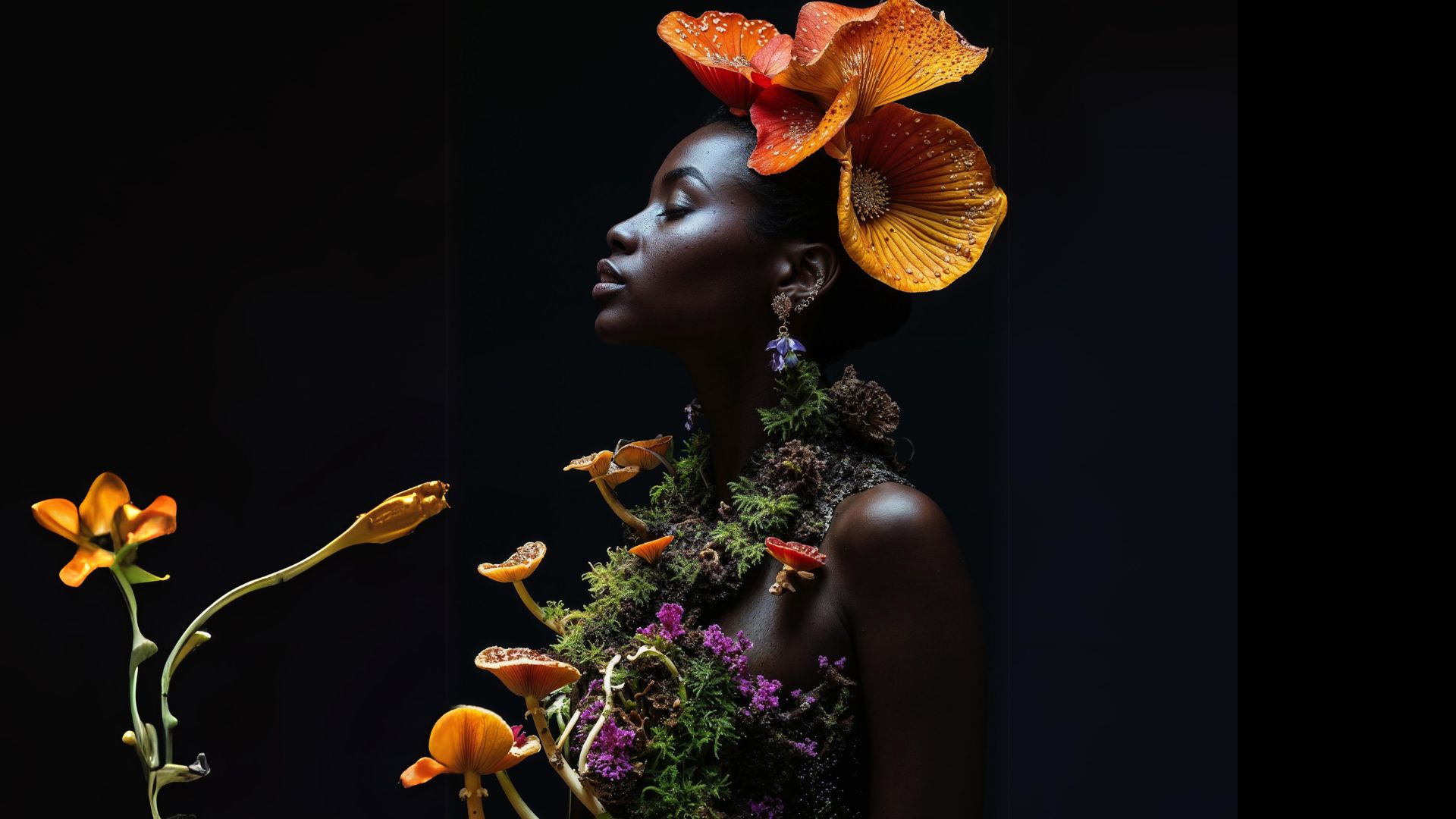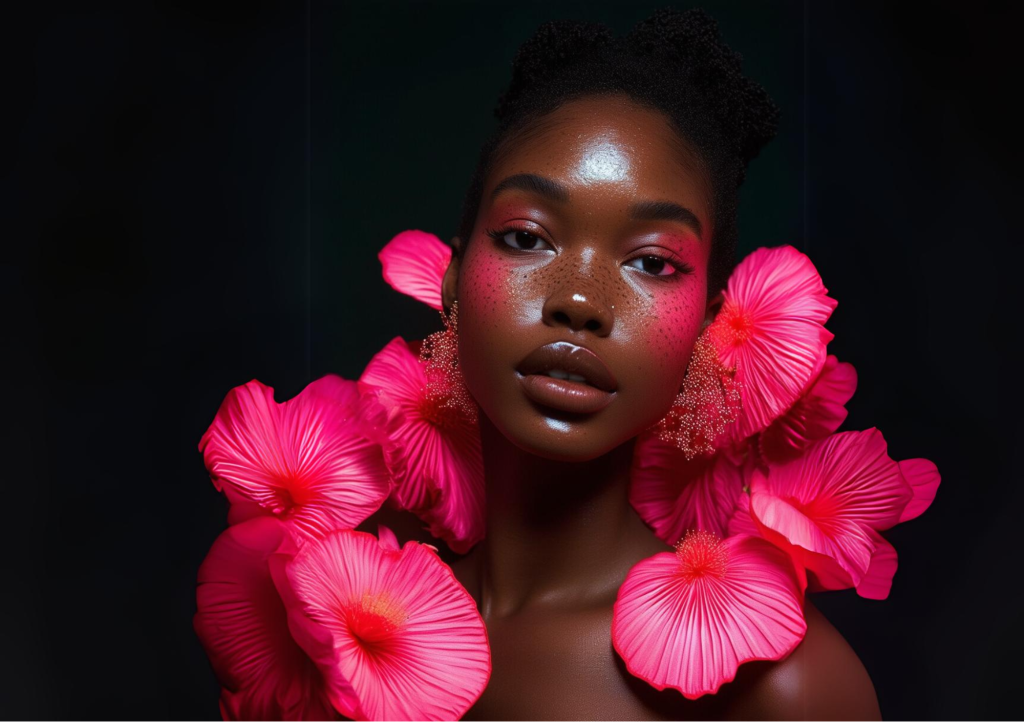
Artificial Intelligence (AI) is a branch of computer science focused on creating systems capable of performing tasks that typically require human intelligence, such as learning, reasoning, and decision-making. Since its inception, AI has been seen as a disruptive technology with the potential to transform industries and significantly improve our lives. However, like any technological innovation, AI presents both advantages and challenges in its early stages of development.
For some, these challenges may seem more significant and lead them to question the change. However, as the technology advances and improves, its benefits tend to expand while its limitations diminish. In the case of AI, although there are ethical debates about its use, its applications are increasingly generating a positive impact in many sectors, including fashion, where its ability to analyze data, personalize experiences, create content, design, and optimize processes is revolutionizing the market.
In this blog, we will explore the advantages and disadvantages of artificial intelligence and how this innovative technology can be applied in the fashion world. We will see how, despite the initial challenges, AI is opening new creative and operational possibilities, always considering its ethical and responsible development.
As we have previously discussed, Artificial Intelligence (AI) is a field of computer science that aims to develop systems capable of performing tasks that traditionally require human intelligence. Through advanced algorithms and the processing of large amounts of data, AI can learn from experience, recognize patterns, and, in some cases, make decisions autonomously.
There are several branches of AI, such as machine learning, which enables machines to learn and improve with experience, and deep learning, which uses neural networks to process information. It also includes technologies like natural language processing (NLP), which facilitates interaction between humans and machines.
Within these branches, generative AI is gaining particular relevance in creative fields, such as the fashion sector. Generative AI uses models like Generative Adversarial Networks (GANs) and transformers, which can create new content from existing data. At Neural Fashion, we have created a platform based on generative AI to assist fashion brands throughout their creative process, from collection design to the creation of photoshoots. This technology not only allows for deep personalization but also opens up new creative possibilities, transforming how we produce our photoshoots.
AI is not limited to a single application or industry; its versatility allows it to be adopted in diverse sectors such as medicine, business, and transportation. In each case, AI is revolutionizing the way products are designed, produced, and marketed, optimizing every stage of the process.
As this technology advances, it is crucial to understand both its benefits and drawbacks. It is precisely this duality—its ability to enhance efficiency, creativity, data analysis, and decision-making, against the backdrop of ethical debates—that makes AI a fundamental technology of our era.

Artificial Intelligence (AI) is revolutionizing various industries by offering innovative solutions that enhance efficiency, personalization, and decision-making. In the fashion sector, AI not only optimizes processes but also boosts creativity, promotes sustainability, and saves time for designers and companies. Below, we explore ten key benefits of AI, some of which are already transforming the fashion world thanks to Neural Fashion
AI allows for the automation of routine tasks that are often tedious and time-consuming, such as inventory management, data sorting, or the analysis of large volumes of information. By delegating these tasks to AI systems, companies can significantly reduce the margin of error and improve operational efficiency. This frees professionals from monotonous work, allowing them to focus on more creative and strategic activities. In the fashion sector, for example, this automation enables designers and creatives to spend more time innovating new designs, creative ideas for their campaigns, trends, and products, thereby generating greater added value and enhancing differentiation among companies in a highly competitive market.
Artificial intelligence has the ability to analyze vast amounts of data in real time, extracting patterns and detailed insights about customer preferences, behaviors, and needs. This capability allows companies to offer highly personalized experiences, tailoring products, services, and recommendations to each customer individually. In the fashion industry, for instance, AI can analyze purchase data, browsing history, and style preferences of each customer to suggest clothing, accessories, and outfits that perfectly match their tastes and needs. This not only enhances customer satisfaction but also increases the likelihood of sales, loyalty, and retention. Additionally, by gaining a deeper understanding of their consumers, brands can anticipate trends and adjust their collections more accurately, staying relevant in a constantly evolving market
Artificial intelligence has the ability to process and analyze large volumes of data in real time, allowing companies to gain deep and meaningful insights that would be impossible to identify manually. This ability to handle massive data—from sales statistics and market trends to customer feedback and competitor analysis—enables business leaders to make more informed decisions based on facts rather than assumptions. In the fashion sector, this is particularly valuable: AI can analyze data on product performance, detect emerging buying patterns, predict changes in demand, and optimize inventory levels. By having access to these insights, companies can quickly adapt their marketing strategies, adjust their collections based on customer preferences, and improve their supply chain management, resulting in greater efficiency and competitiveness in the market. Moreover, by identifying trends in real time, brands can anticipate market needs and launch products that capture consumer interest at just the right moment.
Artificial intelligence, through machine learning algorithms, can analyze large amounts of operational data and detect inefficiencies and bottlenecks in a company’s processes. Unlike traditional methods, AI not only identifies problem areas but also suggests improvements based on historical patterns and predictive analysis. This allows companies to make faster and more accurate decisions to optimize their workflow, inventory management, and internal operations. In the fashion sector, for example, AI can analyze the entire production cycle, from design to distribution, identifying opportunities to reduce waste, improve quality, and shorten delivery times. By implementing these adjustments, brands not only reduce operational costs but also increase productivity, enhance efficiency, and respond more quickly to market demands. Additionally, by optimizing processes, companies can focus more on innovation and the development of new products, allowing them to remain competitive in a constantly changing environment.
Generative artificial intelligence, one of the most disruptive technologies today, is revolutionizing the fashion sector by enabling the creation of unique and original designs that challenge traditional approaches. At Neural Fashion, we use generative AI to help brands and designers explore new creative possibilities that go beyond the conventional limits of creativity. This not only facilitates experimentation with innovative and cutting-edge styles but also allows the creation of customized collections that reflect emerging consumer preferences and demands.
Moreover, generative AI at Neural Fashion is not limited to garment design; it also extends to marketing campaigns. This innovative platform can quickly and easily create highly creative and realistic campaigns featuring the brand’s collection pieces. It allows brands to generate different visual content proposals based on current trends, customer profiles, and market data with ease, enabling them to tell more immersive stories and connect more deeply with their audience. This ability to innovate in design and campaigns not only fosters creativity but also allows brands to stand out in a crowded market by differentiating themselves through originality and relevance.
In this sense, Neural Fashion positions itself as a leader in using AI to drive innovation in both design and communication, providing tools that transform how brands conceive and present their collections. By adopting these technologies, not only are creative boundaries expanded, but processes are also optimized, making fashion more dynamic, inclusive, and sustainable
Using deep learning techniques, artificial intelligence can analyze large volumes of historical and current data to identify patterns and predict future trends and behaviors. In the fashion industry, this allows brands to anticipate market demands, adjust their collections, and optimize inventories, minimizing the risks of overproduction and ensuring that their products resonate with consumers.
Moreover, predictive analysis can optimize marketing and sales strategies by helping to identify the best promotion channels, the ideal timing for product launches, or adjusting prices according to demand. With this capability, companies can quickly adapt to market changes, making more informed decisions that maximize their profitability and competitive positioning.
Through chatbots and virtual assistants, AI provides 24/7 customer support, enhancing the user experience and reducing wait times. These systems can not only answer frequently asked questions and resolve basic issues immediately but also learn from each interaction to provide more accurate and personalized responses in the future. Additionally, by handling a large volume of simultaneous inquiries, AI frees up human staff to focus on more complex cases, increasing the overall efficiency of the service. The implementation of AI in customer service also helps collect valuable data on customer preferences and needs, allowing companies to tailor their services and continuously improve user satisfaction.
Artificial intelligence can play a crucial role in enhancing sustainability within the fashion industry. By optimizing processes such as inventory management and product demand forecasting, AI helps brands align production with the actual needs of the market, thereby reducing material waste and minimizing excess stock. By predicting which products will be in higher demand, companies can avoid overproduction and, consequently, decrease the environmental impact associated with the storage, transportation, and eventual disposal of unsold products.
With Neural Fashion, brands can take sustainability a step further. Using generative AI, they can create their photoshoots without leaving the office, just from their computer. Additionally, brands can develop their campaigns using virtual designs without the need to produce unnecessary physical samples. This not only saves material and energy resources but also allows for greater agility and adaptation to changing trends. In this way, Neural Fashion not only reduces environmental impact but also helps brands become more efficient and sustainable, aligning with the values of modern consumers who seek more responsible fashion.
By automating complex tasks and streamlining design and production processes, AI enables significant time and resource savings, leading to greater operational efficiency.
Furthermore, with generative AI tools like Neural Fashion, designers can create collections more quickly and explore new forms of creativity. Campaign production teams can conduct their photoshoots much faster without needing to travel to a location or invest the extensive time required in a traditional production process

Artificial intelligence is revolutionizing the fashion industry by driving innovation at every level. With AI tools such as machine learning and generative artificial intelligence, brands can explore new creative frontiers that were unimaginable with traditional methods. AI allows for the analysis of patterns and emerging trends from large volumes of data, providing designers with insights into what consumers are looking for or might desire in the future. This not only facilitates the creation of new collections that align with market demands but also opens the door to avant-garde styles and concepts that challenge the conventional boundaries of fashion.
Despite its numerous benefits, artificial intelligence (AI) faces some challenges and limitations that need to be considered, especially as an emerging technology.
AI is a constantly evolving technology, which means that some of its applications are still in the early stages of maturity. This implies that, in some cases, AI systems may require continuous adjustments and improvements as market needs evolve and new algorithms are developed. For companies, this may translate into the need to stay updated with the latest innovations and be prepared to adapt quickly to these changes.
Despite the advancements, there is a certain level of fear or distrust towards new technologies like AI, especially among those who are not familiar with how it works. This resistance may stem from fear of the unknown or the perception that AI is too complex or could threaten certain jobs. At Neural Fashion, this challenge is addressed through education and clear communication, demonstrating how AI can complement and enhance creative work rather than replace it.
Since AI is an advanced technology, it may require work teams to receive specialized training to make the most of its capabilities. This involves dedicating time and resources to training staff so they understand how AI works and how it can be effectively integrated into their workflows. However, this need for education also creates opportunities to develop new skills and knowledge within the company.
Often, the perception of AI is that it can automatically solve all business problems. However, implementing AI requires careful planning, constant testing, and integration with other approaches to achieve optimal results. In this sense, it is essential to manage expectations and understand that, while AI has enormous potential, its success depends on how it is implemented and aligned with the company’s strategic objectives
Integrating AI with already established systems and processes can present technical and organizational challenges. This may involve adjustments to the technological infrastructure and the redefinition of certain processes to ensure a smooth integration. However, once this phase is overcome, the benefits in terms of efficiency and creativity can be significant.
While AI is a powerful tool, its adoption, like other technologies, comes with a learning curve for users. Understanding how to interact with the technology, interpret its recommendations, and adjust strategies based on its outputs can take time. However, gradual adaptation and familiarity with these tools can lead to more effective and strategic use in the long term.

Artificial intelligence (AI) is becoming a fundamental technology for the fashion industry, demonstrating its potential in nearly every area of the value chain. From data analysis to campaign design, AI offers innovative solutions that help brands become more efficient, sustainable, and competitive in an increasingly dynamic and demanding market.
One of the most notable applications of AI in fashion is data analysis. Brands can use AI to process massive volumes of data from various sources, such as social media, online sales, customer feedback, and global trends. This analysis allows companies to identify consumption patterns, better understand their customers’ preferences, and predict changes in demand. As a result, brands can make more informed decisions and tailor their product and marketing strategies with greater precision.
Additionally, AI significantly enhances customer interaction. Through chatbots and virtual assistants, brands can offer personalized attention and real-time support, creating unique and satisfying shopping experiences. This personalization not only improves customer relationships but also facilitates product recommendations based on individual behaviors and preferences, increasing the chances of conversion and loyalty.
Another critical area where AI shows its power is in trend analysis and design. Generative AI can help designers explore new creative possibilities by generating innovative patterns, colors, and styles. This enables brands to develop collections that not only align with emerging trends but also introduce unique elements that differentiate the brand in a saturated market. Moreover, by predicting which styles will be most popular in future seasons, brands can minimize the risk of investing in products that will not resonate with their audience.
In the production of photoshoots and marketing campaigns, AI is transforming how brands create visual content and reduce their “go-to-market” times. By using generative models and advanced algorithms, brands can develop virtual scenarios, simulate locations, and create high-quality images without the need for costly and lengthy physical productions. This not only allows for greater flexibility and creativity in conceptualizing and producing campaigns but also significantly reduces the costs and environmental impact associated with traditional photoshoots. By generating visual content more quickly and efficiently, brands can launch their collections to market in shorter timeframes, responding rapidly to consumer trends and demands and ensuring they are always one step ahead of the competition.
In conclusion, artificial intelligence is a powerful and versatile tool for the fashion industry. Its ability to improve decision-making, optimize processes, and offer personalization at scale makes it an invaluable ally for brands looking to tackle current challenges, such as sustainability and rapid market adaptation. As AI technology continues to evolve, its integration into fashion will not only be desirable but essential to maintaining relevance and competitiveness in the sector.
Neural Fashion is the first artificial intelligence platform that assists fashion brands throughout their entire creative process, from garment design to the creation of campaign photoshoots. Our platform brings generative AI closer to all fashion brands, allowing them to explore new creative possibilities without needing to be tech experts. With Neural Fashion, any brand can leverage the power of artificial intelligence to develop unique collections and create spectacular photoshoots quickly and efficiently.
With Neural Fashion Studio, we offer a completely personalized approach, tailoring marketing campaigns and visual content to the specific needs of each brand. Brands do not need to interact directly with the platform; we handle the entire process, from generating creative concepts based on the brand’s briefing to executing virtual photoshoots. This ensures high-quality results and a style consistent with each brand’s identity, without them having to worry about the use of AI.
Furthermore, at Neural Fashion, we believe in the importance of education and training in new technologies. That is why we offer workshops and training sessions to all brands interested in learning how to integrate AI into their creative processes, helping them stay ahead in a competitive market.
Thanks to Neural Fashion, brands do not have to worry about keeping up with the latest developments in AI. Instead, they can focus on what they do best: designing and connecting with their customers. Our platform handles everything related to artificial intelligence, ensuring that brands will see benefits in their results, such as greater efficiency, creativity, and responsiveness to the market.
Compartir